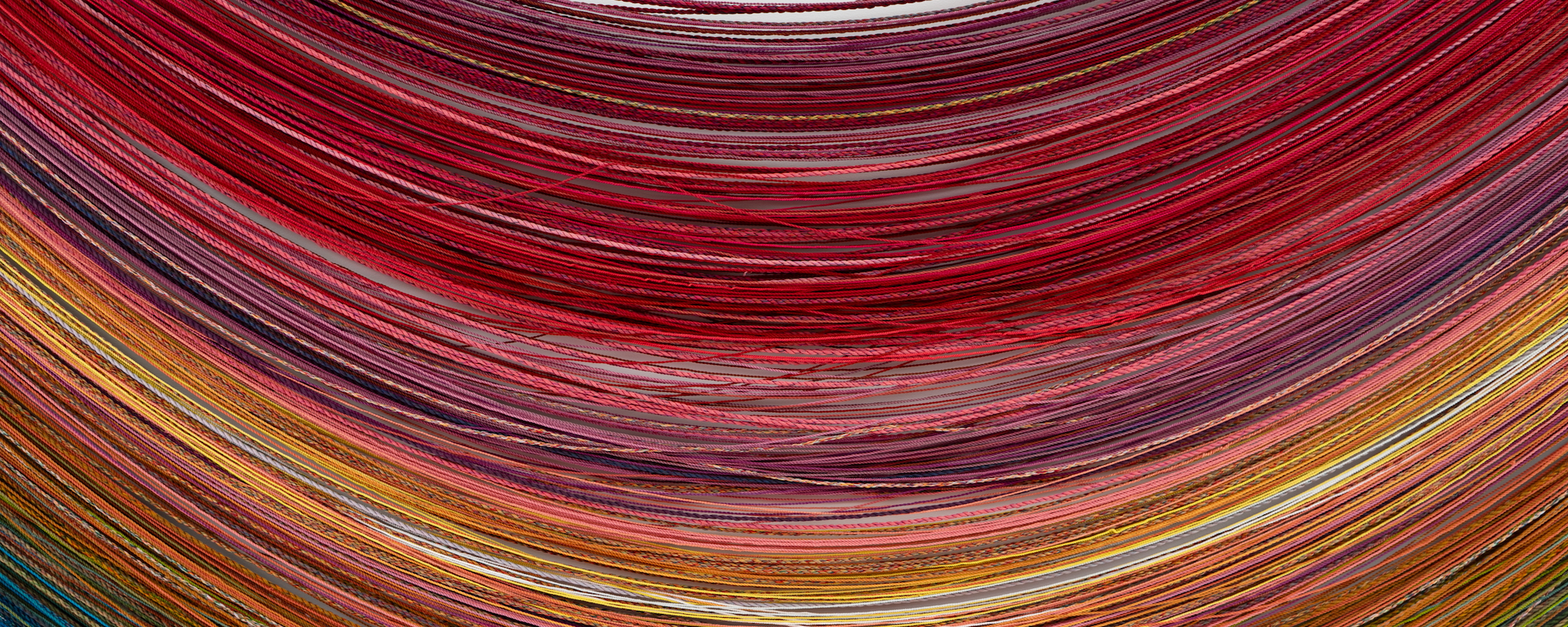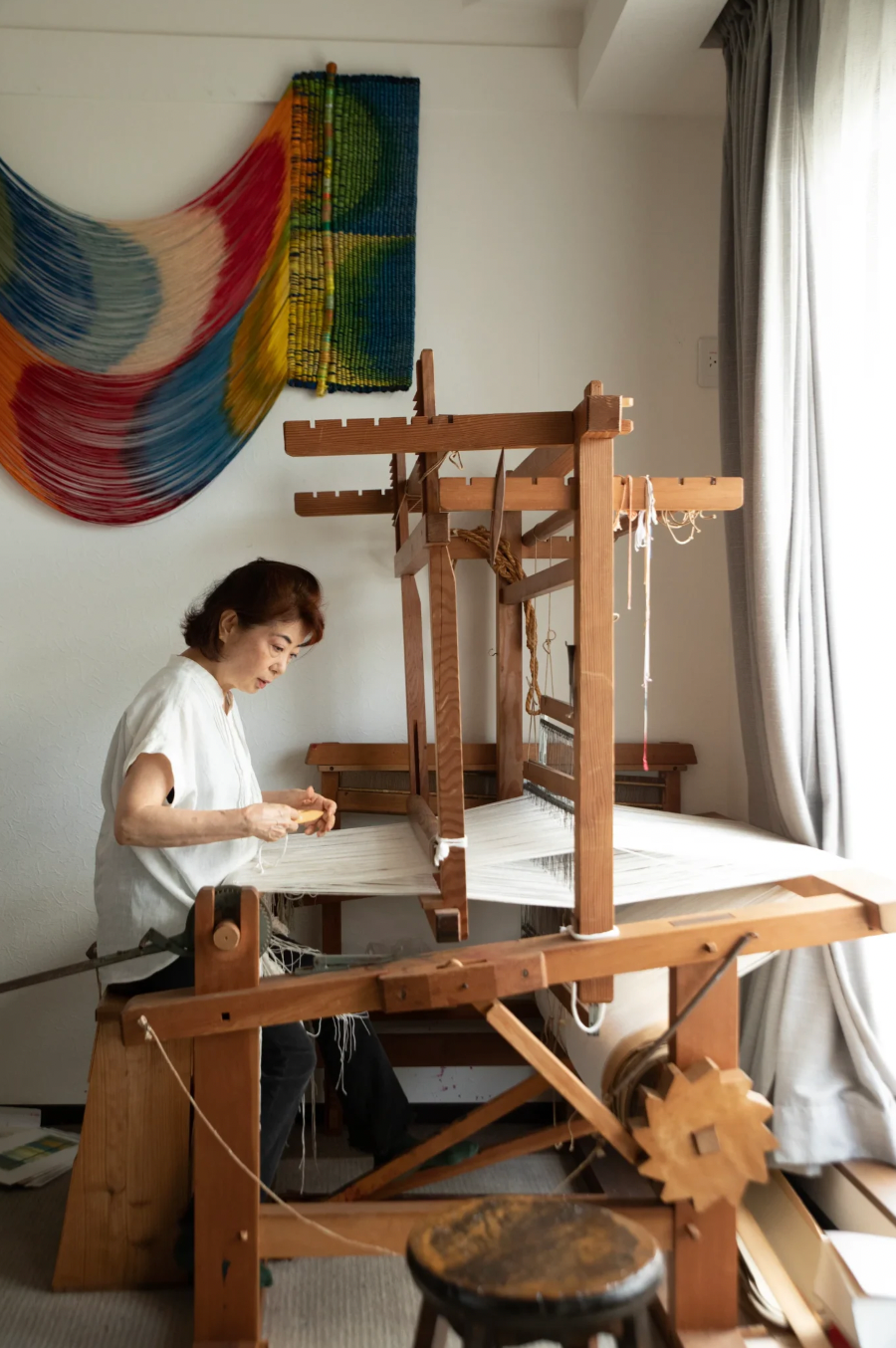
Mitsuko Asakura
B. 1950, Kyoto, Japan; Lives and works in Kyoto, Japan
“The charm of textile resides in its minimalistic complexity...In short, we cannot find anything simple and elementary in textile.” – Mitsuko Asakura
Artwork
Exhibitions

The Lady and the Unicorn: New Tapestry
Biography

Mitsuko Asakura at her studio in Kyoto, Japan. Image courtesy Mika Sasaki for Daniella on Design.
Mitsuko Asakura (b.1950) is a Kyoto-based artist whose sweeping ombré silk tapestries revel in the subtle gradations of color and shadow which as she notes, “make the symphonic solidness of the textile echo in the distance.” Steeped in her memories of the annual Gion Festival in which floats, or yamahoko, are adorned with textiles including European tapestries of the 16th and 17th centuries, her work also honors Kyoto as a center of thread dyeing and weaving in the making of kimonos. Hand-dyeing her fibers with local flora and fauna as well as chemical dyes and utilizing both contemporary and historical looms, her experimentation equals her contemplations of histories both Western and Japanese. Some of Asakura’s most remarkable work is a series titled Oritatamu beginning in the 1970s. The title comes from a Japanese play of words that means“weaving and/or folding.” While Japan has a tradition of folding in clothes including kimono, byobu (folding screens), and origami (folding paper). In European tapestry tradition, folding has been taboo as a wall textile is either spread or rolled. Asakura challenges this rule by using the act of folding in the making of her work, turning over the front and back and creating a discontinuous nonlinear pattern. Another invention is found in her Origamaru series, also a word play for “weaving and/or bending.” She weaves warp and weft non-vertically and at an angle, transforming the textile by opposing the thread’s inherent tendency to intersect at ninety degrees.
Asakura’s work was recently the subject of a solo exhibition at Onna House, East Hampton (NY) in 2022. In 2008, Asakura was the subject of a solo traveling exhibition, Tapestry in Architecture: Creating Human Spaces, which traveled to The Japan Society, New York (NY); Harvard University’s Reischauer Center, Boston (MA); and The Morikami Museum, Delray Beach (FL). Recent group exhibitions include Kyoto Textiles: From the 1960s to the Present, at The National Museum of Modern Art, Kyoto (JP); and Post-War Expressionism, at the Tanabe City Museum of Art, Wakayama (JP), both in 2019.
Asakura’s work has been collected by many significant public institutions, including The British Museum, London (UK); Cleveland Museum of Art (OH); Harvard University’s Reischauer Center, Boston (MA); The Museum of Art and design, New York(NY)); The Museum of Modern Art, Shiga (JP); The National Museum of Art, Osaka (JP); The National Museum of Modern Art, Kyoto (JP) and The National Museum of Modern Art, Tokyo (JP), among others.